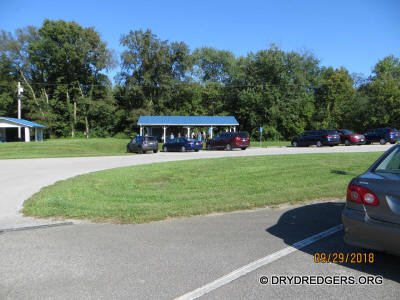
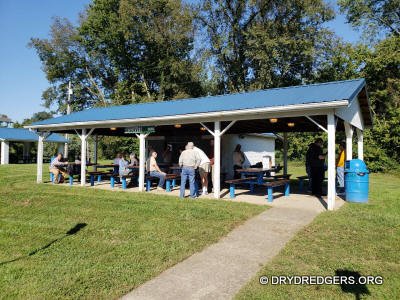
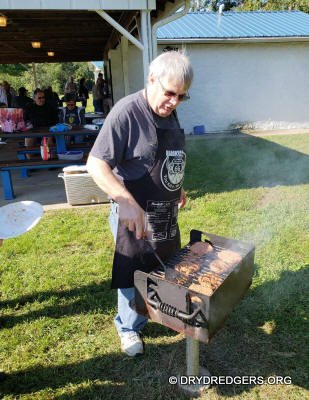
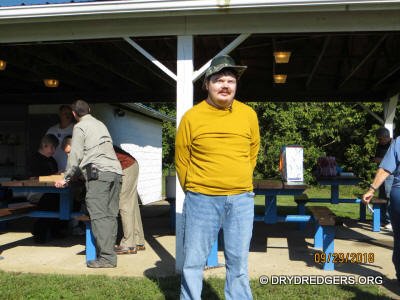
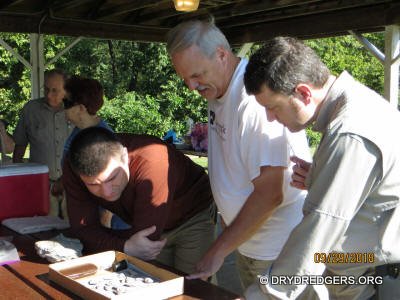
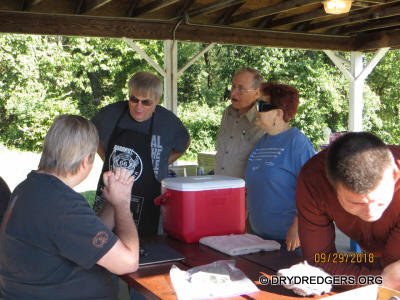
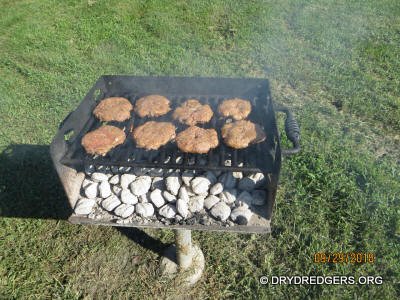

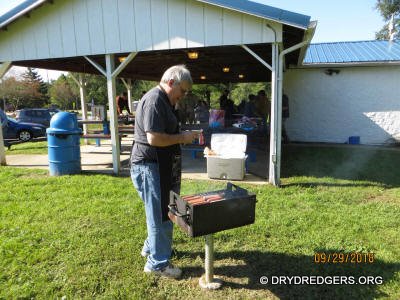

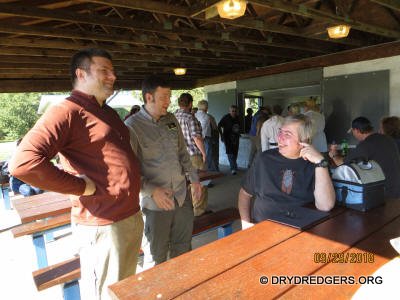
Photos by Matthew Speights, Tom Bantel and Rick Schrantz
The Dry Dredgers September field trip resumed the tradition of a picnic with the Kentucky Paleontological Society, a fellow fossil club based in Lexington, KY. We take turns hosting and this year the Dry Dredgers is hosting. Each year (except last year) we get together, bring covered dishes and deserts to share and have a cook out.
This year we chose Fredrick's Landing, a public landing for boats to access the Ohio River via the Licking River. Our field trip chair, Bob Bross is back in action after complications with his knee replacement led to a long period of disability and ultimately another new knee. Bob reports that he is good as new once again.
Here are some photos of the nice picnic lunch and cookout.
After lunch we headed out to our first fossil site. Matthew Speights was our guide. We traveled down our favorite scenic byway which we had last visited as a group exactly a year ago in September 2017.
The road cuts on which we stopped exposed the Southgate member and the Brent member of the Kope formation.
Nautiloid Cephalopods
The most popular fossil finds that day were straight-shelled
nautiloid cephalopods.
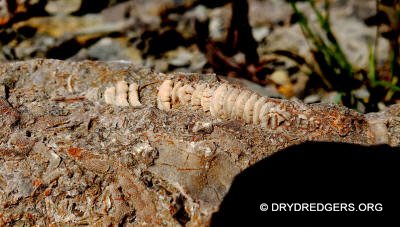
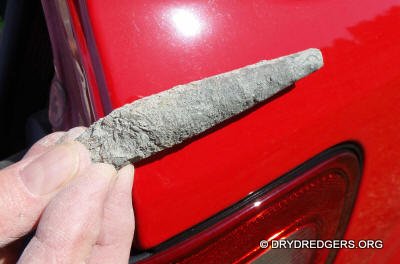
Trilobites
It's not hard to find trilobites on the sites we visited but
it takes time and a bit of luck to spot one
on the surface of the shale. No digging is permitted on this state
highway. One member was lucky enough to find a molt of what is probably a
Flexicalymene sp..
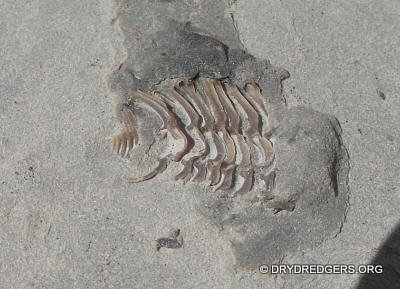
Trace fossils (Ichnofossils) were fairly common. The
excitement rose when examples of trilobite tracks where found (next 2 pics).
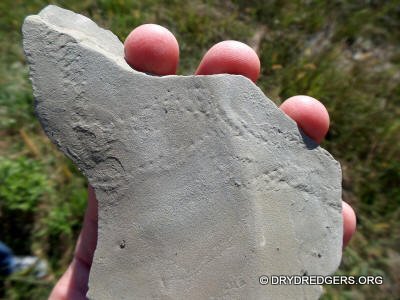
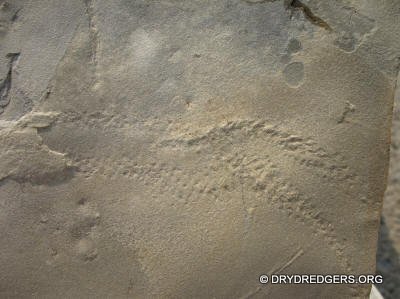
Bryozoans
Of course, the most common fossil, found by the tens of billions on the scenic byway is the bryozoan. These tiny animals made colonies of branching and encrusting hard shells that carpeted the late Ordovician sea floor. This sea was a warm, shallow water environment below the equator.
Here's a really nice group of articulated branching bryozoans
called Ramose Bryozoans. This specimen is so nice, it's the kind you want to get
an acrylic stand for at Hobby Lobby and put it on your desk at work.

Here's an interesting bryozoan that has distinctly shaped
holes in it. The holes are caleld Catellocaula vallata.
These trace fossils are still being studied and are highly collectable.

Another type of bryozoan that we found easily were encrusters.
These animals attached to a small hard surface, such as a brachiopod, and
reproduced to form a patch of zoecia. Here's a couple of pictures of just such a
colony of encrusters that are probably Aspidopora.


Gastropods (snails)
There was a mollusk layer exposed on the first site that can
amaze everyone with the shear quantity of snails.
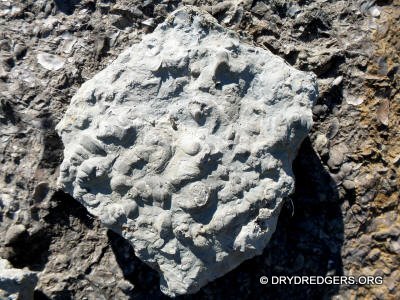
Brachiopods
We found abundant quantities of the brachiopods Sowerbyella sp, Cincinnetina sp and Zygospira sp. but no photos to show for it. Here is a brachiopod just beginning to emerge from a shale layer.
With all the weathering shale, exposing countless fossils over time, we see all sorts of weathering features. Here one interesting case where the shale has buckled from water erosion exposing iron deposits.
That's all we have for this field trip. I wasn't able to attend, so I have to thank Matthew Speights, Tom Bantel and Rick Schrantz for providing some photos
Join us for our October field trip to Keener Park.
See previous trips down this scenic byway in northern Kentucky
September 2017
May
2016
April 2014
October 2010
October 2008
Back to the Field Trip Index Page
Return to Dry Dredgers Home Page
The Dry Dredgers and individual contributors reserve the rights
to all information, images, and content presented here. Permission to reproduce
in any fashion, must be requested in writing to
admin@drydredgers.org.
www.drydredgers.org
is designed and maintained by Bill Heimbrock.